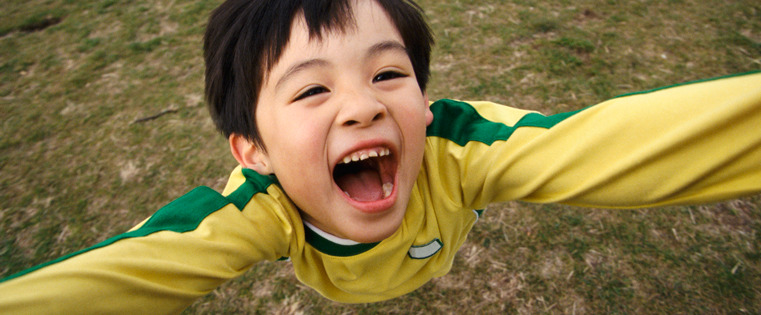 Increasing bandwidth, an ever-expanding number of distribution channels and the SEO power of video has created a rich opportunity for marketers in the pharmaceutical and biotech industries. This technological foundation, coupled with an online culture that values honest, authentic communication, makes it the right time for brands to employ patient advocacy videos in their marketing efforts.
Increasing bandwidth, an ever-expanding number of distribution channels and the SEO power of video has created a rich opportunity for marketers in the pharmaceutical and biotech industries. This technological foundation, coupled with an online culture that values honest, authentic communication, makes it the right time for brands to employ patient advocacy videos in their marketing efforts.

Cambridge-based biotechnology company Genzyme understood this when they decided to create “Facing Fabry Together,” a global documentary about living with Fabry disease — a rare, inherited disorder that often results in serious complications such as kidney failure, heart attack and stroke. Genzyme makes Fabrazyme, an enzyme replacement therapy used to treat Fabry disease.
Fabry patients and their families live a precarious and challenging life, and the rarity of the disease makes many feel isolated and alone. By creating a documentary that essentially held up a mirror to this patient community, the Fabrazyme brand team saw an opportunity to inspire hope and establish a lasting and meaningful relationship with Fabry patients.
The documentary had three objectives:
- Increase awareness and understanding of Fabry disease.
- Educate patients and their families about the importance of diagnostic testing.
- Develop a deep connection between the brand and the patient community.
A Director’s Perspective
As the director of the documentary, I traveled with the Fabrazyme team to Canada, France, Brazil, Germany and the U.S. to interview families living with Fabry disease. Coaxing nervous patients to open up and share their stories honestly and candidly is always a delicate dance. On this project, the language barrier complicated matters. However, disease knows no boundaries. As a two-time cancer survivor, I was able to share my own health struggles with the families I interviewed, and suddenly we were speaking the same language. We were speaking patient.
Like the patients and families I interviewed, I have woken up at 2:00 a.m. in fear because of concerns about my health. Like them, on many sleepless nights when all I could think about was the war raging in my body, I have relied on the Internet for information and hope. The Internet helped calm my fears by delivering videos of others who were living my story with grace and honesty. When pharma and biotech brands are able to deliver this kind of experience to their customers, everybody wins.
You Had Me at “Hello”
While being a patient myself was certainly helpful, it’s not mandatory for a director to have a successful on-camera interview with patients and their families about a health issue. The real key to an honest and compelling interview is building trust, and that starts long before the cameras get rolling. In fact, it starts with the first phone call you make to the family.
That first call, along with each point of contact along the way to the final interview, provides key opportunities for you to connect with the interview subject in a significant way. During the course of your pre-production conversations and emails, be sure that you:
- Learn as much as you can about the interviewee before you meet. It will provide good context for your pre-production communication.
- Let the patient and family know that they will be helping others by sharing their story. They are making a selfless contribution to the larger patient community. Celebrate and acknowledge that fact.
- Conduct a shortened interview to capture the high-level details of their life and their diagnosis. Take good notes and refer back to specific details in future communications.
- Share all pertinent details about the video shoot itself. Bringing cameras and lights into someone’s home is exciting but can also be a little intimidating. To make the process more comfortable for them, provide details about production and what will happen during the shoot in very basic terms.
By taking these steps, you will already have an established relationship with the family by the time you arrive for the interview. This was particularly helpful during production for “Facing Fabry Together.” Since I had to interview patients and their families through an interpreter, both in my pre-production phone calls and during the actual interviews themselves, I needed to arrive at each interview with a trusted relationship firmly in place.
Lights, Camera, Action
The interview itself is where your pre-production work pays off. If all goes well during the pre-production conversations, your interview subjects both like and trust you. They also know that you value their story and the contribution that they are about to make to the patient community. For your part, you should have your questions in hand, and be ready to start.
Before you do, however, remember this: You are about to interview a human being who is nervous, scared and wakes up at 2:00 a.m. because she is afraid and can’t sleep. She wants to tell you a story, but the only way that will happen is if you have a conversation with her. Ask your questions, but then listen. Really listen. As you listen you can reflect back the feelings you hear in the patient’s words. This technique will unlock remarkable storytelling and compelling material.
Fade to Black
Five countries, 14 months and 16 interviews after it started, Genzyme’s “Facing Fabry Together” documentary was completed. Genzyme developed a distribution plan that ensures anyone who wants to see the film can access it, and the company is also working to promote the film all around the world. On the website, patients and their families can either order the DVD or stream the film directly — and that is something that may come in awfully handy at 2:00 a.m.









